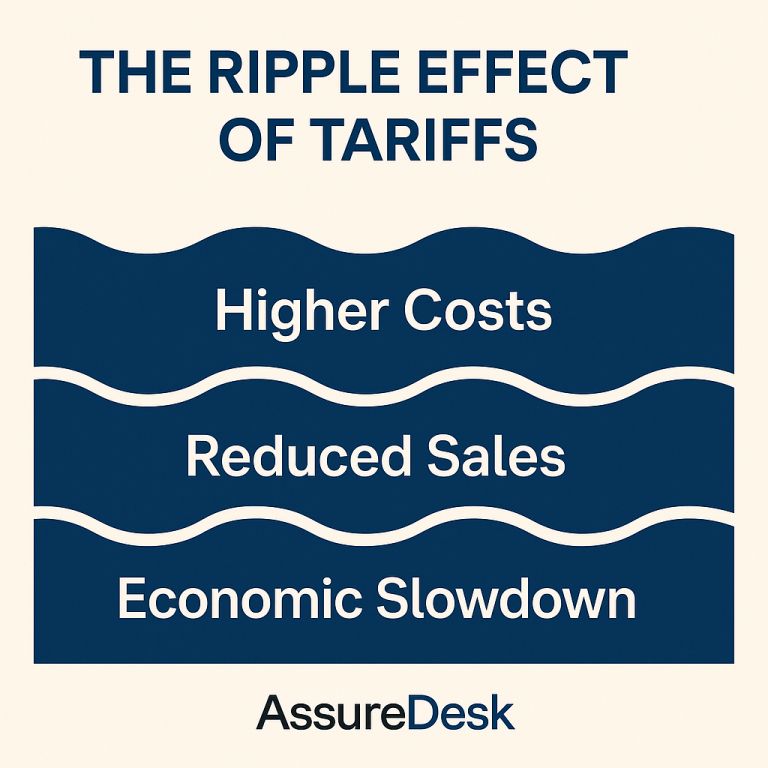
Trump’s 2025 Tariff Surge: What Insurance & Finance Stakeholders Must Know
The Breaking News: Tariffs at 50%
On August 27, 2025, the Trump administration officially doubled tariffs on Indian imports from 25% to 50%. This move has triggered a fresh wave of trade tension, rattling supply chains and straining U.S.–India relations. Alongside this, tariffs and threats of tariffs are reshaping multiple industries—from technology and digital trade to everyday consumer goods.
For businesses, insurers, and financial advisors, this is not just politics. It’s a risk multiplier that demands close monitoring.
Snapshot of Key Tariff Moves in 2025
-
India Tariffs: Imports now face a steep 50% levy, souring bilateral trade ties.
-
Digital & Tech Threats: New tariffs and export controls are being eyed for countries that impose digital service taxes.
-
Small-Parcel Duty: The U.S. ended its $800 duty-free exemption. Even low-value cross-border shipments now face 10–50% duties or flat fees ($80–$200).
-
Commodities Disrupted: U.S. tariffs on Brazilian coffee sent ripples through the global commodity market.
-
Judicial Pushback: While courts struck down some “Liberation Day” tariffs under emergency powers, many tariffs remain active under other legal authorities.
The Economic Ripples
-
GDP & Wages: Analysts project long-term GDP could shrink by ~6%, and wages by ~5%.
-
Consumer Prices: Electronics could see major hikes—smartphones (+31%), laptops/tablets (+34%), gaming consoles (+69%).
-
Household Impact: Average U.S. families could pay $1,300 more in 2025 alone, rising to $1,600 in 2026.
-
Federal Revenue: Tariffs may raise $172 billion in 2025, but at the cost of higher consumer burden and slower growth.
Why This Matters to Insurance & Risk Management
1. Supply Chain Disruption
Businesses importing goods now face higher costs, delays, and uncertainty. This increases exposure to contingent business interruption claims and raises premiums for manufacturers and retailers.
2. Trade Credit & Political Risk
With U.S.–India ties under strain, defaults and non-payments in cross-border contracts could rise. Trade credit insurance and political risk cover are becoming more critical for exporters and investors.
3. Consumer Market Shifts
As electronics, autos, and medical devices get pricier, consumers may delay purchases or switch demand patterns. Insurers should anticipate changes in claims frequency and recalibrate product pricing.
4. Financial Strategy Implications
CFOs and financial advisors must incorporate tariff volatility into scenario planning. Budgeting, capital allocation, and even M&A decisions need to reflect this new layer of uncertainty.
Assuredesk’s Perspective: Proactive Risk Planning
At Assuredesk, we believe tariffs highlight the importance of preparedness. Just as families and businesses need the right insurance cover, companies exposed to global trade need forward-looking risk assessments.
Checklist for Stakeholders:
-
Have you reviewed your trade credit insurance terms recently?
-
Do your business interruption policies cover tariff-related supply chain shocks?
-
Are your clients aware of political risk insurance options for cross-border contracts?
-
Have financial models been updated to test tariff-driven what-if scenarios?
Trump’s 2025 tariffs are more than a headline—they’re a financial reality check. The winners will be those who adapt quickly, protect their downside, and plan for volatility.
👉 How are you updating your risk strategy in light of these changes? Let’s discuss.